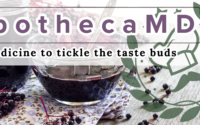Activation of the sweet taste receptor T1R3 by sucralose attenuates VEGF-induced vasculogenesis in a cell model of the retinal microvascular endothelium
Graefes Arch Clin Exp Ophthalmol. 2019 Jan;257(1):71-81. doi: 10.1007/s00417-018-4157-8. Epub 2018 Oct 23.
ABSTRACT
BACKGROUND: One of the most prevalent microvascular complications for patients with diabetes is diabetic retinopathy (DR) associated with increased retinal endothelial blood vessel formation. Treatments to reduce vascularisation in the retinal endothelium are linked to improved sight in patients with DR. Recently, we have demonstrated the novel protective role of the artificial sweetener, sucralose, and the sweet taste receptor, T1R3, in the pulmonary endothelium to reduce vascular leak. In the present study, we examined the role of sucralose and sweet taste receptors on vasculogenic processes (proliferation, migration, adhesion and tube formation) in a cell model of the retinal endothelium.
METHODS: We exposed human retinal microvascular endothelial cells (RMVEC) to VEGF as an in vitro model of DR in the presence and absence of T1R3 agonist sucralose.
RESULTS: In RMVEC, we observed increased VEGF-induced cell proliferation, migration, adhesion and tube formation, which was significantly attenuated by exposure to the artificial sweetener sucralose. Following siRNA knockdown of the sweet taste receptor, T1R3, but not T1R2, the protective effect of sucralose on VEGF-induced RMVEC vasculogenic processes was blocked. We further demonstrate that sucralose attenuates VEGF-induced Akt phosphorylation to protect the retinal microvasculature.
CONCLUSION: These studies are the first to demonstrate a protective effect of an artificial sweetener, through the sweet taste receptor T1R3, on VEGF-induced vasculogenesis in a retinal microvascular endothelial cell line.
PMID:30353220 | PMC:PMC6323138 | DOI:10.1007/s00417-018-4157-8

